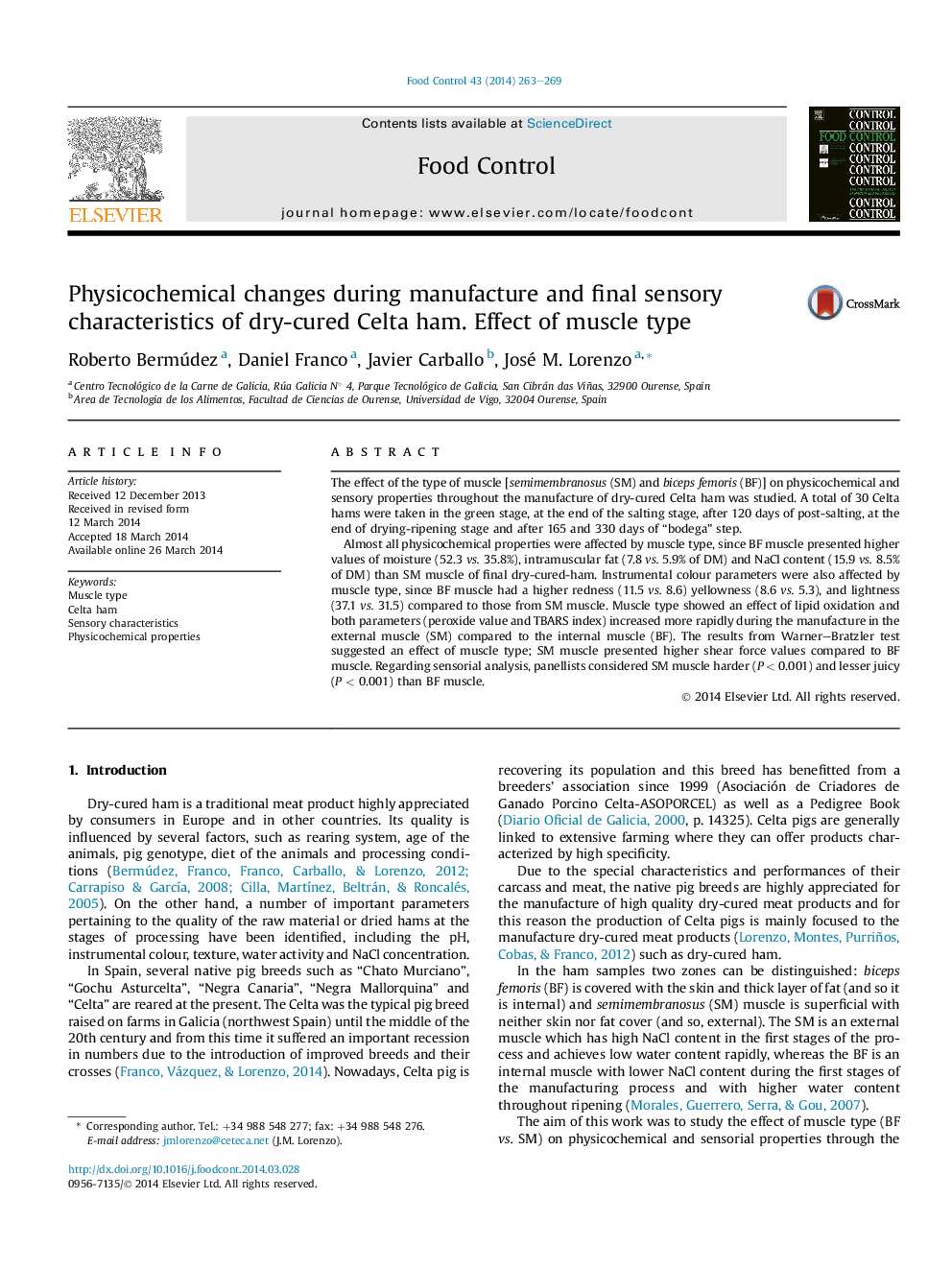| کد مقاله | کد نشریه | سال انتشار | مقاله انگلیسی | نسخه تمام متن |
|---|---|---|---|---|
| 6391816 | 1628419 | 2014 | 7 صفحه PDF | دانلود رایگان |
- Muscle type affects physicochemical properties of dry-cured Celta ham.
- Biceps femoris muscle presented higher moisture, intramuscular fat and NaCl content.
- Biceps femoris muscle had a more intense red compare to semimembranosus muscle.
- Panellist considered semimembranosus muscle harder and less juicy than Biceps femoris muscle.
- Lipid oxidation increased faster in the SM muscle compared to BF muscle.
The effect of the type of muscle [semimembranosus (SM) and biceps femoris (BF)] on physicochemical and sensory properties throughout the manufacture of dry-cured Celta ham was studied. A total of 30 Celta hams were taken in the green stage, at the end of the salting stage, after 120 days of post-salting, at the end of drying-ripening stage and after 165 and 330 days of “bodega” step.Almost all physicochemical properties were affected by muscle type, since BF muscle presented higher values of moisture (52.3 vs. 35.8%), intramuscular fat (7.8 vs. 5.9% of DM) and NaCl content (15.9 vs. 8.5% of DM) than SM muscle of final dry-cured-ham. Instrumental colour parameters were also affected by muscle type, since BF muscle had a higher redness (11.5 vs. 8.6) yellowness (8.6 vs. 5.3), and lightness (37.1 vs. 31.5) compared to those from SM muscle. Muscle type showed an effect of lipid oxidation and both parameters (peroxide value and TBARS index) increased more rapidly during the manufacture in the external muscle (SM) compared to the internal muscle (BF). The results from Warner-Bratzler test suggested an effect of muscle type; SM muscle presented higher shear force values compared to BF muscle. Regarding sensorial analysis, panellists considered SM muscle harder (PÂ <Â 0.001) and lesser juicy (PÂ <Â 0.001) than BF muscle.
Journal: Food Control - Volume 43, September 2014, Pages 263-269
